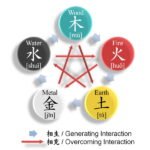Korean Industry Minister Ahn Duk-geun (left) shakes hands with US Commerce Secretary Gina Raimondo in Washington, D.C. on April 12, 2024
WASHINGTON, D.C. – The US government has given automakers additional flexibility on battery mineral requirements, allowing electric vehicles with batteries containing graphite from China to be eligible for tax credits until the end of 2026.
South Korea, home to the world’s leading battery makers LG Energy Solution Ltd., Samsung SDI Co. and SK On Co., welcomed the US decision, saying the US move is a win for Korean and other global automakers and battery manufacturers.
According to the US Federal Register on Friday, the Treasury Department released the formal regulation for consumer EV credits alongside the final criteria for sourcing battery minerals – namely, what can’t come from China.
Under the finalized rules, the US Treasury said it would give automakers until 2027 to remove some hard-to-trace minerals like graphite contained in anode materials and critical minerals contained in electrolyte salts, binders and additives.
The Treasury said that graphite will be considered “impracticable-to-trace” until then as the current graphite supply chain involves mixing natural and synthetic materials and synthetic graphite is made from crude oil that’s hard to trace.
POSCO Chemical’s artificial graphite anode material plant in Pohang
Under existing US guidelines, trace critical minerals from China and other countries deemed a Foreign Entity of Concern (FEOC), including North Korea, Russia and Iran, were ineligible for US tax credits stipulated by the Inflation Reduction Act (IRA).
The US government now says that graphite will be temporarily exempt from FEOC compliance until 2027 as long as EV makers and battery firms demonstrate how they plan to comply by then.
REALITY CHECK
Analysts said the new Treasury rules appear to recognize the realities of the global supply chain as the Joe Biden administration hopes for a faster US consumer adoption of electric cars.
The IRA grants qualifying EV buyers up to $7,500 per vehicle if the clean car is assembled in the US and the battery’s minerals are mined or processed in the US or countries with free trade agreements with Washington.
The Hyundai IONIQ 5 crossover will be one of the beneficiaries of the US decision
The IRA rules are designed to wean the US EV battery chain away from China. However, automakers and battery makers have struggled to meet strict sourcing requirements.
China currently accounts for 70% of the global output of graphite, used to make electric battery anodes, the negatively charged portion of the battery.
To be eligible for US tax benefits, Korea’s top automaker Hyundai Motor Co. and battery maker LG Energy Solution have promised heavy investments to build their plants in the US.
LG Energy, the world’s No. 2 battery maker after China’s CATL, said last year it would invest 7.2 trillion won ($5.6 billion) to build a battery complex in Queen Creek, Arizona to meet rising demand for clean cars in North America.
LG also signed battery materials supply deals with Canadian minerals companies to respond to the US tax credit law.
SEOUL WELCOMES US MOVE
South Korea’s Minster of Trade, Industry and Energy Ahn Duk-geun welcomed the US decision, saying in a press release on Saturday that Seoul’s efforts to include Korean companies’ positions, including one on the graphite issue, in US rules “bore fruit.”
US President Joe Biden vows to hold China’s battery materials supremacy in check
Korean automakers and battery firms as well as their rivals in other countries have expressed concerns that it will be difficult to find an alternative supply chain for graphite within the timeframe given under the IRA.
“The Korean government has been actively communicating with the US to maximize benefits for South Korean companies since the enactment of the IRA in August 2022,” the ministry said in a statement.
In March 2023, Korea also officially requested the US government review details of the guardrail provisions in the CHIPS and Science Act to ease the rules limiting Korean chipmakers’ production capacity in China.
The so-called guardrails are part of Washington’s efforts to thwart Beijing’s chip supremacy ambitions while securing the supply of the components that underpin advanced technologies, including artificial intelligence and supercomputers as well as everyday electronics.
By In-Seol Jeong and Sul-Gi Lee
surisuri@hankyung.com
In-Soo Nam edited this article.















